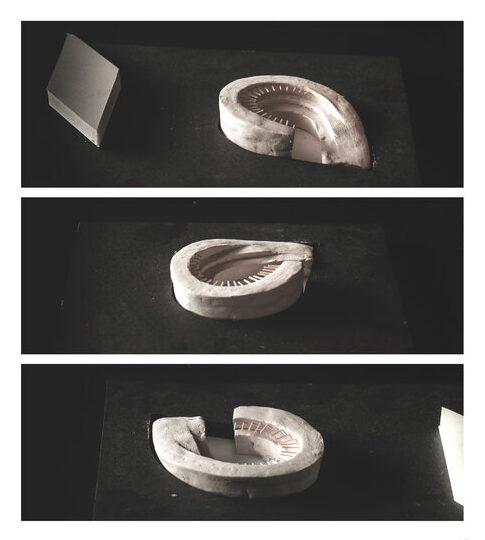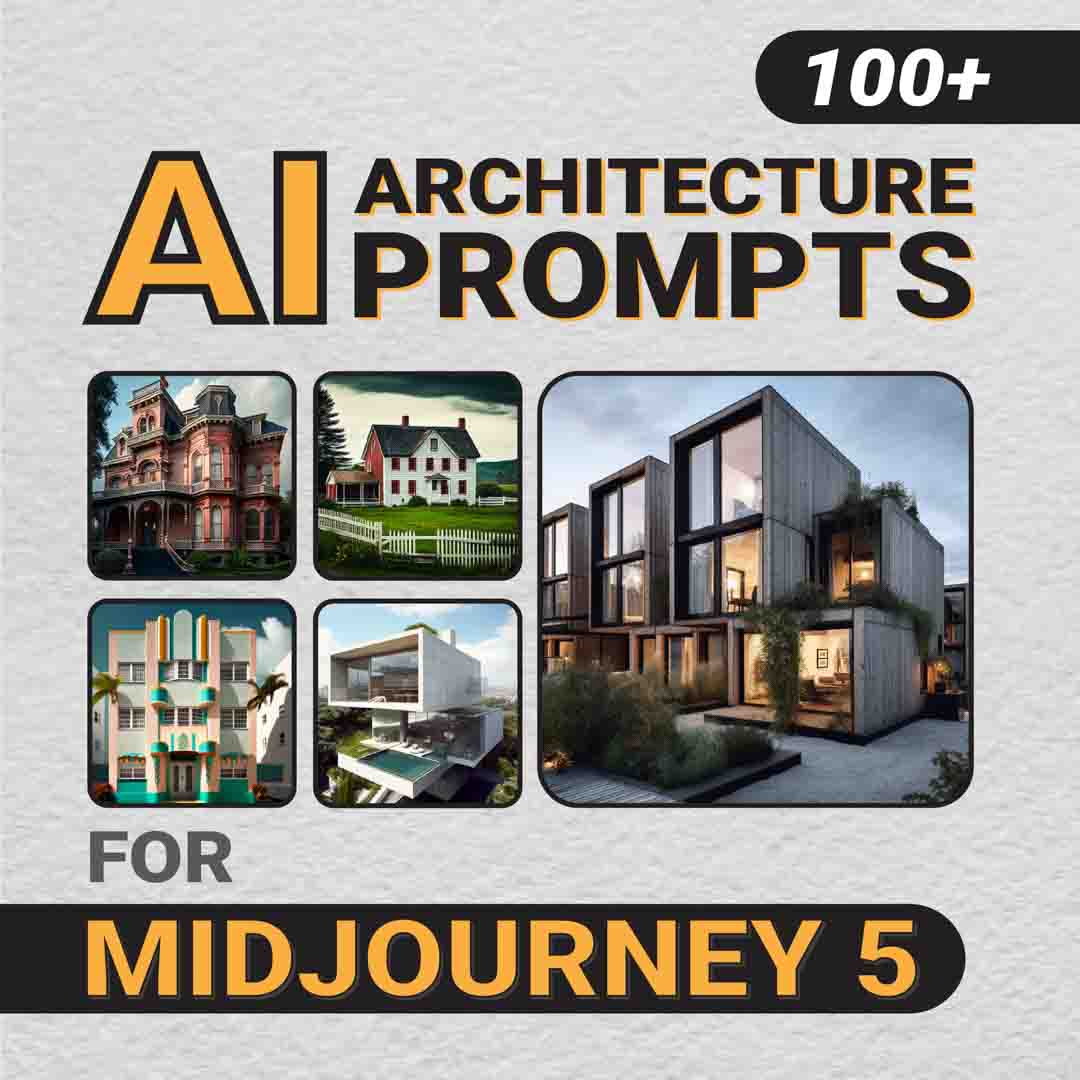“Architecture as a social condenser” has become a popular topic of conversation in recent years, and the concept is arguably more important than ever for architectural design.
In this post, I’ll walk you through my own process for designing architecture around this concept “social condenser”, what exactly it means, and how you can get inspiration to apply to your own design process.

In essence, architecture as a social condenser served to develop new spatial devices focused in promoting equality in education, working, and living conditions. Social class and gender would be designed out of existence, and architecture would become the means to bring people of different backgrounds together to function within the same space.
What is a Social Condenser?
The notion of a social condenser began in the late 1920’s during Soviet Constructivism. It is an idea in which architecture can be used a catalyst to facilitate social interactions within communities. This theory is rooted in architectural programming, and suggests that contradictory programmatic functions should be combined to create new architectural ideas. The term “social condenser” was coined by Constructivists to express what architecture could serve post-revolutionary urban environments, and what its social functions would become.
If you’re curious to dive a bit deeper into the history of architecture as a social condenser, I strongly encourage you to check out this book:

“Architecture is the art and science of accommodating the lives we want to live. Our cities and buildings aren’t givens; they are the way they are because that is as far as we have gotten to date. They are the best efforts of our ancestors and fellow planetizens, and if they have shortcomings, it is up to us to continue that effort, pick up where they left off.”
This is a concept that is just waiting to be recharged and brought back into modernity.
How can architecture and programming be used to create new ambiguous layouts that bolster our needs in a modern society?
History of the Social Condenser: Case Studies
Here are some precedent examples of contemporary uses of architecture as a social condenser:
- Russia: https://www.toposmagazine.com/narkomfin-and-the-social-condenser/
- Taiwan: https://oma.eu/projects/taipei-performing-arts-center
- Iran: http://hiddenarchitecture.net/bazaar-of-kashan/
- USA: http://www.grahamfoundation.org/public_exhibitions/5273-lina-bo-bardi-together?utm_medium=website&utm_source=archdaily.com
- USA: https://www.archdaily.com/32668/social-condenser-for-superior-blank-studio
Condensing Art and Architecture: The Role of Art in Society
Modern art, in a sense, is a feedback loop that binds history and culture together and manifests within the physical environment so that people – living members of Houston’s urban society – can interpret it. The notion of “dangerous ideas” is inherent in the history of the CAM, and it is evident that the artists who contribute to the CAM have embraced this mindset. Looking at past exhibitions, one must imagine the parallels of time and place – modern artists strive to produce the unimaginable – something that has never been seen before.
Therefore, modern artists must live within this feedback loop and try to create something that influences the way that people look at the world. It is an arduous endeavor – to push the present into the future by cultivating seeds of the past – but all art completes its cycle when it is contemplated by someone else.
The CAM is a non-collecting art museum, which means that it does not have a permanent collection, nor does it deal in acquisitions. A non-collecting institution “…can focus its resources, funds, and staff on exhibitions, educational programming, and public outreach, allowing a more comprehensive interaction between the museum and the public.”
The CAM in its current state – a corrugated steel-clad building originally designed by architect Gunnar Birkerts in 1972 – is juxtaposed within the museum district of Houston. Its mission is unique because it allows artists to become part of the conversation. For example, in 2017, the CAM housed an exhibition by Matt Keegan and Kay Rosen in which the artists explored linguistics in their artwork.
These artists excel at wordplay, and their work raises questions about the architecture of language – how we interpret what we read, from newspapers to street signs. The artists were able to use their artwork to connect to the public, and to allow the public to interpret the world differently.


The CAM is an integral piece of Houston’s art scene. It allows the public to place themselves within the feedback loop of history and culture, so that they may contemplate their contribution to the world that we inhabit. Like the art that is housed within it, the building itself manifests the notion of contemplation.
One may easily walk past the concealed entrance because of the way that the glass storefront is tucked away behind the steel façade. In a subtle way, the entrance reflects the very idea of the artwork within the museum. One must look past the veil of existential distractions to “enter” into the realm of contemplation. If we only see the world for what it looks like on the outside, we will miss the opportunity to contribute meaningfully to its progression.
My personal interests in architectural design are rooted in theory – trying to answer the “why” before proceeding with the “how”. Pritzker prize winning architect Alejandro Aravena states, “…there is nothing worse than answering well the wrong question.”
“…there is nothing worse than answering well the wrong question.”
Alejandro Aravena
In this sense, we need to start finding the right questions to ask. I believe that these questions can be formulated through an assessment of the museum district and its role in Houston’s culture. Bill Arning embraces the ‘wild’ atmosphere of the CAM, and he sees this as a unique contemplative environment within the museum district. So, my first question becomes: how can we embrace Arning’s notion and juxtapose our design within the history-culture feedback loop?
Site Context: Contemporary Arts Museum, Houston


The site is located in the heart of the Museum District in Houston, Texas. Site context includes a residential neighborhood to the west, the Glassell School of Art to east, and the Museum of Fine Arts to the south. The site is accessible via Montrose Boulevard, by vehicle and public transit.
As an initial conceptual word, “emergence” comes to mind for a number of reasons.
One, mediatheque buildings are the physical manifestation of a fast-paced, rapidly-evolving world of technology. When new technology emerges, the mediatheque becomes the medium in which the public can experience it directly and personally.
Two, “emergence” implies ascention, or upwards movement. This not only implies semantically the notion of evolution, but it is a word that starts to create the foundational vocabulary in which to use throughout the design of this building.
“Emergence” implies movement from below something or behind something, and it is evident that movement is the fundamental nature of the architectural experience.
We move through spaces — and if designed well, those spaces will “move” us.
Conceptual Design Process
Given the fact that many occupants will be entering the site from an underground tunnel that connects to the existing Glassell School of Art, this notion of “emergence” can already start to be realized in the initial programmatic decisions.
Additionally, there is a strong history of evolution (and the CAMH may argue, a revolution) within the Houston Museum District and within the existing Jung Building. Architects are preservationists in many ways, yet the challenge of an architect is to build – to create spaces that are meant to last a lifetime.
Sculpting Space


As such, the design of the Mediatheque should be considered carefully. The design must be sensitive to the long history of artistic and architectural evolution within the Museum District.
Despite the expansive material palette that is offered by the existing buildings around the proposed building site, the evolutionary history of the Museum District needs to appear in the proposal. This notion presented a question – potentially the first question of many, moving into the initial phases of design:
How can a building existing around the forefront of technology also become rooted in the history of the surrounding context?

Want to step up your AI Architecture Visualizations? Grab a copy of my FREE eGuide, which contains over 100 examples of AI Architecture prompts to use with MidJourney 5.
Design Concept: Architecture as a Social Condenser
Upon completion of the Program Analysis, it is evident that the proposed Mediatheque Building needs to respond to the surrounding context not just through form, but through history. The Museum District of Houston has a history that is rooted in progression, invention, evolution and open-mindedness.
Given the fact that the site is directly next to the Contemporary Arts Museum, the proposed building needs to respond to the notion of contemporaneity. As stated in the Project Introduction, the CAMH needs to “keep wild” so that its mission can continue to adhere to the idea of challenging the public’s perception of art and a technologically fast-evolving society.
Architecture Design Process: 2D Concept Diagrams
Oftentimes, a design must become complex before it can become simplified. But the goal should always be simplification.

Step 1: Start with Overall Concept

Step 2: Apply Site Context

Step 3: Integrate Architecture Program

Step 4: Test Program Adjacencies

Step 5: Cluster Program Elements Together

Step 6: Simplify Program based on Original Concept
In the diagram examples above, the original concept word “social condenser” was diagrammed based on the research on exactly what a social condenser is. Semantically, it is a central space.
Therefore, it made sense to create a diagram that revolves around “central” — or another word, “radial”.
From there, apply what is known about the project. In every architectural design, there are always two known constraints that must be designed around. Those are “site” and “program”.
This design process formula is somewhat universal, so feel free to use this formula with other types of design projects!
Architecture as a Social Condenser: Spatial Experience
The proposed Mediatheque Building should connect occupants to the architecture through perceptual spatial experiences. A proposed underground tunnel will channel people onto the site from the East, allowing occupants to begin their experience by emerging from beneath the ground.
The idea of “emergence” is one of not simply a physical experience through circulation, but poetically, in the sense that technology and media is the forefront of our fast-growing society.
The spatial arrangement should invite people to move vertically, from below the ground to above the street. This experience should happen predominantly in the Building Core, and secondary through the Gallery spaces.
Moving East to West through the site, occupants should progress through various spaces that stimulate specific senses in preparation of entry into the “media” and “tech” parts of the program configuration; i.e., the Gallery will inherently showcase artwork and exhibits that allow people to contemplate and open their minds before they enter the library.
This quick burst of inspiration may prove beneficial to those who are leisurely going to the library to browse for books.
Connecting with the existing CAMH and surrounding neighborhood, the West side of the site should be a quiet green space that extends the existing green space on the East side of the CAMH site.
With a proposed Garden space, users can find that it will serve as a quiet oasis in the midst of a concrete city. The Garden may be softly lit by the reflection of the sun off of the corrugated metal façade of the CAMH, creating an ethereal and relaxing atmosphere.
Shading should be provided within the proposed Mediatheque Building for specific parts of the Garden.
Architecture Design Process: 3D Concept Diagrams
Directly attached to the Garden, the Artist’s House and Education Spaces should reside. The Artist’s House should be relatively separate from the rest of the program to ensure that the tenant is comfortable and can enjoy their privacy.

The Education Spaces should have direct access to the Garden so that classes can be held outdoors if wanted. The primary axis that connects the East to West end of the site should act as both a connecting element, and also a separating element to facilitate privacy between the classrooms and outdoor public spaces.

The Performance Core is the connecting program. It will serve to connect all other program elements together.

Below grade, this program serves purely as functional spaces in which occupants can access the other museums.

Celebrating the idea of media and technology, the galleries will serve as a canvas for digital art and interactive exhibits.

This zone serves to connect private administration to the public library, Occupants entering the lobby have the choice to ascent or descend into the core of the building.

The outdoor auditorium exists on the top floor to provide an unobstructed place to view performances below.

The entire building performs as a social condenser, connecting three social typologies: the MFAH campus, the urban street, and the residential neighborhood.
The Mediatheque Building should fit within the site with approximately 3 stories, with one story being below-grade to create an undulation of spatial experiences through light and proximity.

The materials used within the proposed design should not just take existing materials around the site, but try to reconfigure these materials in a way that reflects the notion of “emergence” and technological evolution.

Simple materials (like the corrugated metal façade of the CAMH) should be tested for use in unconventional ways to reflect the ideologies of the Mediatheque mission.
Floor Plans
Below grade, occupants can enter the social condenser from tunnels that connect to the existing museums. The Performance Core sits in the heart of the building, and is a partial outdoor space that is open to the elements.

The Lobby will serve as the entry point of the Mediatheque Building, creating a gateway between the exterior and interior. The Lobby should not necessarily be strictly indoors, but can create a slow transition between the horizontal nature of the underground tunnel, and the vertical nature of the proposed “emerging” structure.

This space is important, because it is the first part of the building that most people will experience. Its entrance should be grand, making an iconic mark on Montrose Boulevard – but in a way that does not overwhelm the existing CAMH.

Building Elevations
The architecture of the proposed Mediatheque Building should celebrate technology, but also carefully recall the history of art and science in the Houston Museum District. Architecture, after all, is the art and science of human accommodation.

People should be able to experience art in a way that is not currently available in the Houston Museum District.

It is prudent that this proposed Mediatheque Building integrates with the diverse palette of buildings situated throughout the museum district, but one must not simply create an icon to stand out.

The experience should not just be one of “looking at”something , but of feeling. It is important that art is experienced in a way that stimulates all of the senses, and the Mediatheque will be a testament to the emergence of technology that serves as the catalyst for reinvention.

Concept Renderings



Key Takeaways
A “social condenser” — when created through architectural design — facilitates the melding and coalescence of society. Architecture becomes the medium that brings society together. In order to have a clear understanding of how we can use architecture to move society forward, we need to know where to begin in our design process. That beginning happens in the programmatic phase of architectural design.
If you want to learn more about how architecture can be used as a social condenser, I strongly encourage you to check out this book:

“Architecture is the art and science of accommodating the lives we want to live. Our cities and buildings aren’t givens; they are the way they are because that is as far as we have gotten to date. They are the best efforts of our ancestors and fellow planetizens, and if they have shortcomings, it is up to us to continue that effort, pick up where they left off.”

Jon Henning
Hi, I'm Jon. I write about emerging technology in architecture, engineering and design, and I want to help you push boundaries with the latest tech trends in the AEC industry.
Want to step up your AI Architecture Visualizations? Grab a copy of my FREE eGuide, which contains over 100 examples of AI Architecture prompts to use with MidJourney 5.


